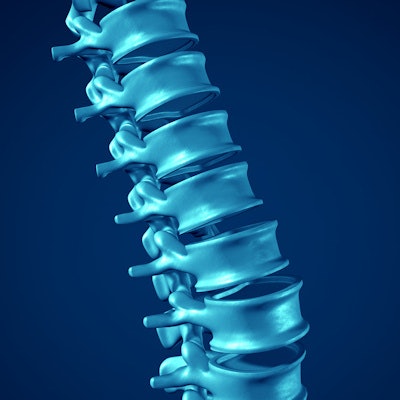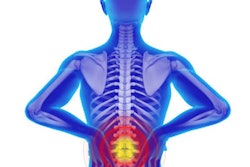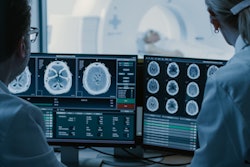
The rate of CT and MRI scans for back pain remained steady from 2001 to 2016 despite efforts to curtail unnecessary imaging tests in emergency departments (EDs) for lower back pain, according to a study published in the February issue of the American Journal of Roentgenology.
On a positive note, the overall number of imaging tests performed for lower back pain decreased significantly during the six-year period, but the result was due exclusively to significantly fewer x-rays being performed.
Despite this decline, however, the dependency on imaging for lower back pain remains high.
"Although there has been a modest decline, in 2016 approximately one in three patients still continued to receive imaging in the ED," wrote the authors, led by Dr. Jina Pakpoor from the Hospital of the University of Pennsylvania (AJR, February 2020, Vol. 214:2, pp. 395-399). "Further, significant geographic variation exists between differing states and regions of the United States."
Back pain is one of the most common reasons people are admitted to the emergency department. Collectively, the visits can strain resources and subsequently add to healthcare costs.
Through awareness campaigns such as Choosing Wisely, radiology and other medical organizations are encouraging clinicians to be mindful when ordering imaging tests. The question is: How well are ED staff heeding the advice?
The current analysis included 134,624 individual patients (mean age, 41.2 years) from a national database who were identified as first-time visitors to the ED with lower back pain. Of that total, 45,405 patients (34%) underwent imaging in the ED for evaluation.
The researchers only included patients between 18 and 64 years because this population is at low risk for serious underlying causes of their lower back pain, such as severe stenosis or a degenerative disease.
The number of imaging exams over the study period heavily favored radiographs with 41,623 (92%), followed by 3,577 CT scans (8%) and 1,043 MRI scans (2%). (Modality totals are greater than 100% because some patients underwent more than one scan in their ED visit.)
The overall use of imaging modalities decreased on a statistically significant basis from 2011 to 2016 (p < 0.001), with the decline due exclusively to fewer x-rays. At the same time, there were "mild increases in the use of CT and MRI," the authors added.
| Frequency rate of imaging tests for ED patients with lower back pain | ||||||
| 2011 | 2012 | 2013 | 2014 | 2015 | 2016 | |
| All imaging tests | 34.4% | 33.9% | 33.1% | 35.4% | 32.9% | 31.9% |
| Radiography | 32% | 31.2% | 30.5% | 32.5% | 29.9% | 28.6% |
| CT | 2.5% | 2.6% | 2.4% | 2.7% | 2.7% | 3% |
| MRI | 0.7% | 0.8% | 0.8% | 0.8% | 0.7% | 0.8% |
The researchers credited national awareness campaigns and guidelines from the American College of Emergency Physicians as reasons for the overall decrease in imaging tests for lower back pain.
"An increasing number of institutions are also implementing clinical decision support tools to support physicians with real-time evidence-based ordering decisions," they added. "This is important because the mean age of our population was 42 years and represents a population in which radiation exposure [from x-rays and CT] should be minimized."
When analyzing the results on a geographic basis, the authors found that the use of imaging varied significantly in certain regions of the U.S. Imaging for lower back pain was greatest in the southern U.S., where it was 10.4% higher than in the western states, 3.5% more than the Midwest, and 2% higher than the northeastern U.S.
"Additional work is needed to elucidate the local health policies and infrastructures that are contributing to geographic imaging variation," they concluded.




















